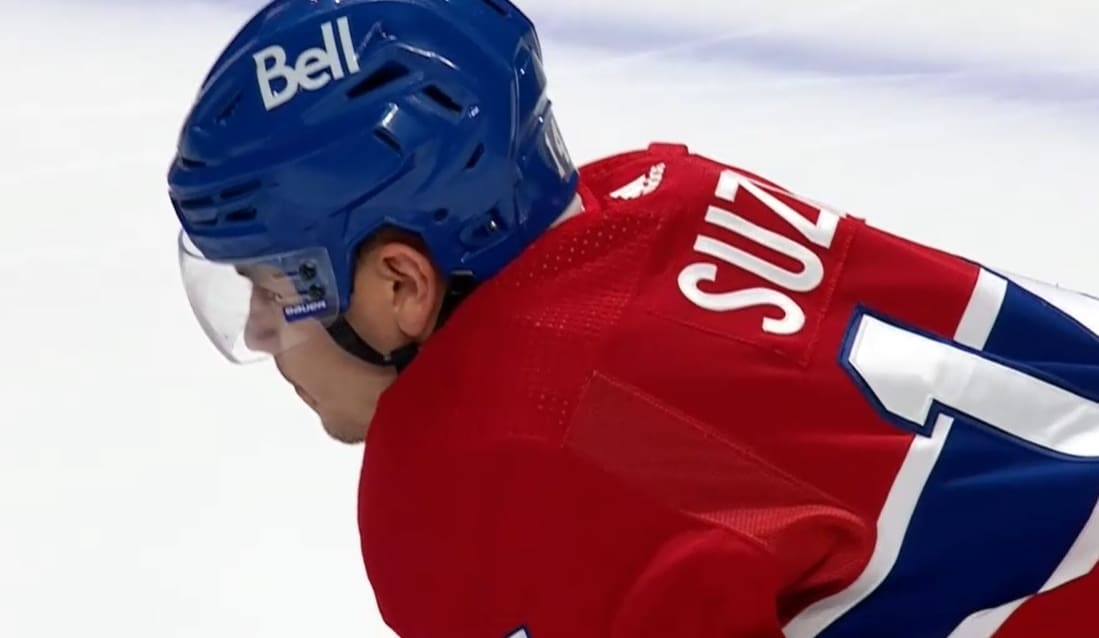Montreal Canadiens
Top-3 Hottest and Coldest Montreal Canadiens in Week 1

With the first week of NHL action in the books, it’s time to take a look back at which Canadiens players surpassed expectations and which players failed to deliver.
Suzuki shines
The Montreal Canadiens captain started the season on the right foot, scoring twice and adding two assists in his first four games. It’s worth noting both his goals came after fantastic individual efforts that involved wraparounds, a good sign seeing as the team will count upon Nick Suzuki to be a game-changing presence on most nights.
Quand ça marche pas d'un bord, on essaie de l'autre!
That individual effort 🤌#GoHabsGo pic.twitter.com/k3gn2lajHR
— Canadiens Montréal (@CanadiensMTL) October 16, 2022
Suzuki’s line has struggled when it comes to maintaining control of the puck, but it’s an understandable outcome given they face the opposing team’s best players, and it’s also something that should improve now that Sean Monahan has been added to the Suzuki trio.
In their first game together, they controlled 61 percent of the shots (19-12), which is the type of dominant play that can Caufield and Suzuki’s current scoring pace, unlike the 39 percent share of the shots the pair had when Josh Anderson was on their line.
Si ça ne marche pas du premier coup, essaies à nouveau.
If at first you don't succeed, try, try again. #GoHabsGo pic.twitter.com/C1SirfWzeT
— Canadiens Montréal (@CanadiensMTL) October 18, 2022
Jake Allen holds the fort
The Canadiens’ starter stood tall in both of his games, making 49 saves on the 52 shots he faced at 5v5, resulting in a sparkling .942 save percentage.
If you wanted to find a nit to pick, you could point to his 5v5 high-danger save percentage of 0.842, but when you consider he faced 19 shots from prime scoring areas in two games, a dip in numbers is easy to forgive.
He saved his best goaltending for the penalty kill, where he saved all 12 of the shots he faced, including 5 high-danger chances.
On an even brighter note, Allen played like the team’s MVP while awaiting the birth of his and his wife Shannon’s new child.
Ssssssuper arrêt 🐍
What a ssssssave#GoHabsGo pic.twitter.com/9NHVGcUxnc
— Canadiens Montréal (@CanadiensMTL) October 15, 2022
Tight Race
There are a few other players that deserve to be on the list due to their strong play, including Jonathan Kovacevic and Jordan Harris, a pairing with little to no experience that has stood out as the Canadiens’ best defensive combination to start the year.
Harris leads all Canadiens players with 10 even-strength shots on net, two more than Suzuki and Caufield.
You could also point to Arber Xhekaj’s strong underlying numbers as evidence that despite his rough-and-tumble style of play, he possesses the type of skill that will allow him to challenge for a roster spot for the foreseeable future.
But it’s another newcomer, Monahan, that truly stole the show.
Considering the Calgary Flames paid the Canadiens a first-round pick to move Monahan’s contract, his two points in two games, including setting up the game-winning goal on Monday night, is already more than most expected from the Brampton native.
He’s been fantastic in transition, which has pushed Monahan to the top of several key statistical categories, including shots (63.8 percent) and scoring chances (60 percent). He’s also been great on faceoffs, winning 67 percent of his draws this season.
Power Kill
It’s not a new phenomenon, but the Montreal Canadiens power play is the hockey equivalent of priming a room over and over without ever applying the final coat of paint.
There’s puck movement and players look busy, but in the end, they never get close to finishing the job.
Teams are aware the Canadiens will force the puck to Caufield, which, thanks to Suzuki’s excellent passing skills often leads to a near chance, but their system is simply too easy to shut down.
Considering his affinity for getting pucks to the net, Martin St-Louis should consider placing Harris on the second power-play unit, which currently doesn’t have a legitimate quarterback.
Considering how poor the first unit has played, St-Louis may want to consider Harris for the first unit as well.
Mister Anderson
Despite scoring a goal, Josh Anderson’s first few games of the season were the epitome of all flash and no substance. During Anderson’s shifts, the Canadiens controlled just 41 percent of the shots and 29 percent of the high-danger chances.
When St-Louis wisely pulled out the line blender, Anderson’s trio fared no better, ending the game against the Pittsburgh Penguins with the worst underlying numbers of any line.
It’s still very early, and Anderson tends to run hot and cold throughout the year due to his style of play, which relies on rush attempts to generate chances, but he’ll need to improve his numbers to above replacement if he’s to reach the 50-point mark for the first time of his career.
Fourth line struggles
The Canadiens have struggled to control the puck to start the season, which, in turn, has led to a shortage of scoring opportunities. And while it would be unfair to pin the blame entirely on the fourth line, they were the biggest offenders when it came to giving up high-danger opportunities.
Jake Evans has had to deal with a rotating cast of linemates, however, there’s no avoiding his underlying numbers, which tell us he’s been outshot and out-chanced on almost every shift, with just 32 percent control of the shots while he’s on the ice.
But there is a silver lining. Once first-round pick Juraj Slafkovsky was placed on Evans’ wings, the fourth line suddenly started controlling the puck much more, to the tune of 78 percent of the shots and 72 perfect of the scoring chances in Monday’s game against the Pittsburgh Penguins.
(Statistics are 5v5 unless otherwise noted, via NaturalStatTrick)










